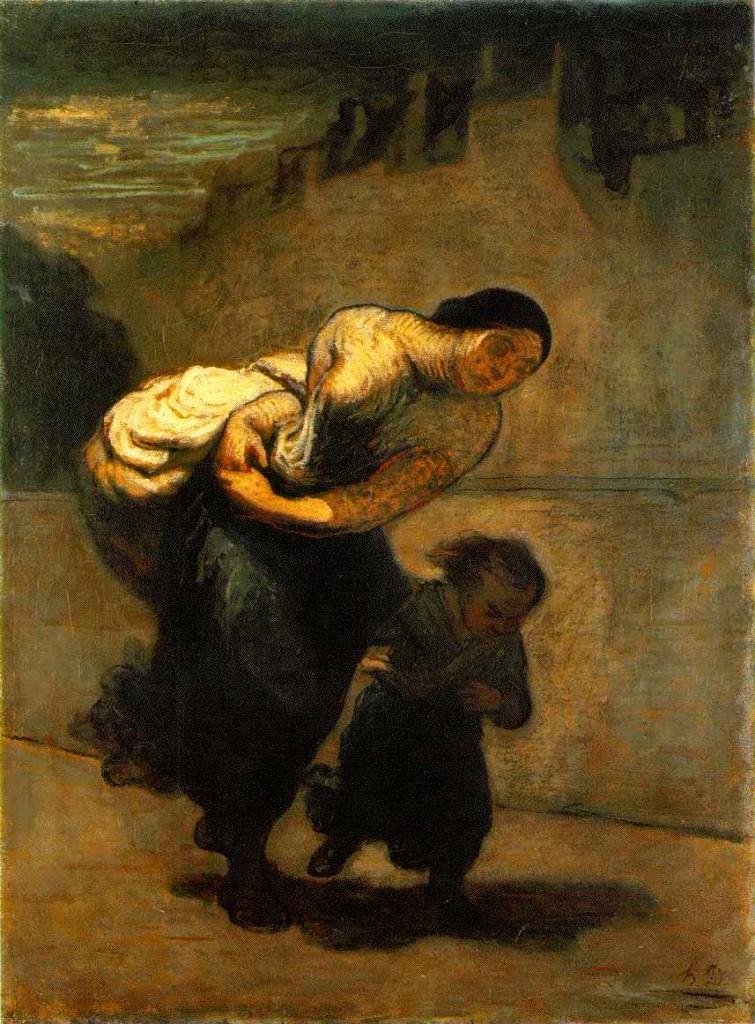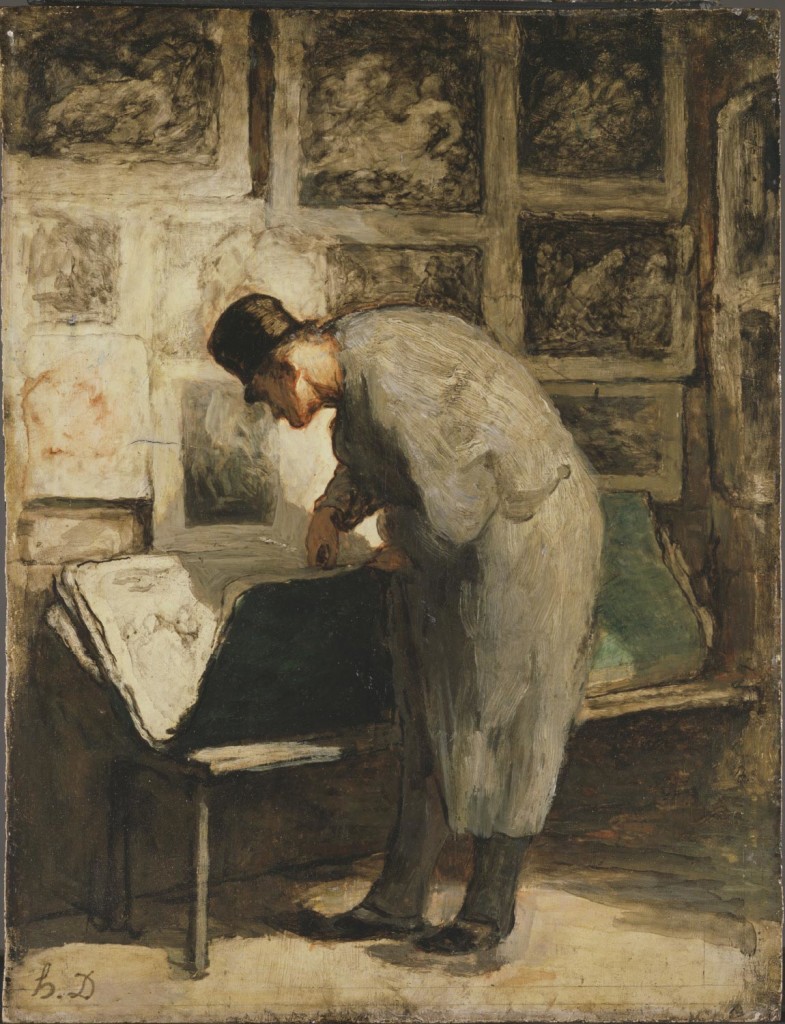Honore Daumier made his living as a cartoonist. His paintings were known to few during his lifetime. But, upon his death a syndicate acquired them and made a tidy killing on the proceeds.
Daumier did about five thousand cartoons, though the word “cartoon” for his benevolent satires on the fortunes and misfortunes of the Parisian bourgeoisie is somewhat inadequate to describe his sense of social justice and antipathy for political corruption and hypocrisy as well as overall concern with the nobility and dignity of human life.

—He is said to have made more than 4,000 lithographs, wishing each time that the one he had just made could be his last. In the last years of his life he was almost blind and was saved from destitution by Corot. —click image for source…
Daumier’s closest counterpart may have been Rembrandt who sensitivity to age and poverty are reflected in Daumier’s fully developed style revealing as it does, through the commonplace and the most ordinary of people. Even in his cartoons, which could be quite biting, Daumier never crossed the realm into the malicious, part of an overall respect for humanity that is believed to be ultimately good. But when humanity is violated by tyrants, opportunists, and just plain callous stupidity by those in power and influence, Daumier was merciless.

—While the caricatures and newspaper attacks are merely brilliant, Daumier’s paintings are different to the point of being other-worldly. It’s hard to think of another painter whose work seems as self-evidently progressive and out of step with his times this. Goya, perhaps. Rembrandt, perhaps. Daumier is not quite in either of their leagues – too much of his energy went into churning out everything else on show here – but as a painter he shared their stylistic fearlessness, and their darkness.—click image for source…
Daumier was one of the great draughtsmen of his century: within a few bent lines and and a quick wash of shadow he could capture the psychological identity of an individual. In a gesture, in an apparently casual attitude reduced to very basic and simplified forms, he could reveal the behavior, social class and spirit of his subject, as he does in The Print Collector.
ADDENDUM:
(see link at end)…Toward the end of his life, Daumier was poverty-stricken and nearly blind. When he could not afford to pay his rent in Valmondois, located on the outskirts of Paris, his close friend of many years, the artist Camille Corot, secretly bought the house and then presented it to his friend as a gift. Daumier died in 1879 and was buried at public expense. A year later his body was moved to the Cemetery of Père Lachaise beside the grave of Corot, who had died four years earlier.
Daumier’s paintings remained largely ignored during his lifetime. In the early twentieth century, the Ash Can school artist John Sloan took inspiration from Daumier’s humanist prints and paintings, noting that “the reason Rembrandt and Daumier were greater artists than some others is that they were more human. If you think of a human being when drawing from the figure, you will make much finer drawings”. Daumier was held in the highest regard by collector Duncan Phillips. In the 1920s, Phillips declared, “the principal ambition of my Gallery at present is to make my Daumier Unit second to none and of worldwide fame and importance” Read More:http://www.phillipscollection.org/documents/education/HonoreDaumier.pdf







 COMMENTS
COMMENTS